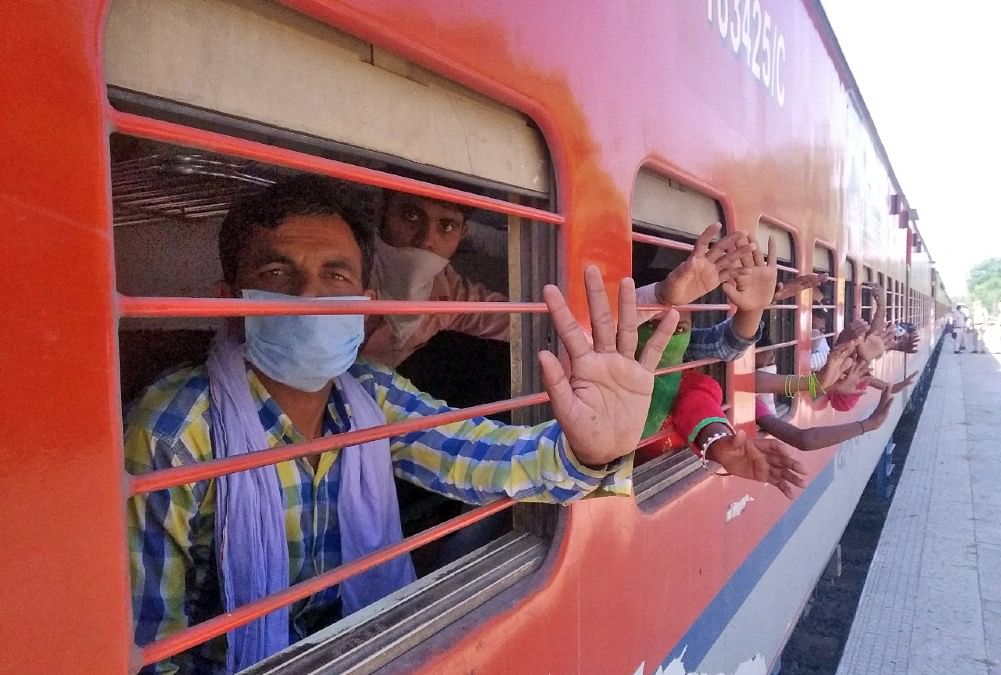At the time of the 21stcentury’s first pandemic, when most public transport is suspended across the world, in India, the largest public transport network and the biggest employer of the country – the mighty Indian Railways – has itself become the story. The journey of the Indian Railways through Covid-19 symbolises India’s response to the crisis: starting on a high note of hope and resolve, but soon giving way to panic and despair as the deep fault lines began to surface.
From the cruelty of making income-starved migrants pay for tickets to ferrying lakhs of them to the safety of their homes; from the heart-rending news of a train running over 16 migrants as they slept in exhaustion on railway tracks to giving hope of some semblance of normalcy by starting select passenger trains for the first time in almost 50 days – with its contradictions and flip-flops, the Indian Railways has at once been the source of both hope and anguish for millions of Indians.
And that is why, it is ThePrint’s Newsmaker of the Week.
Also read: 932 Shramik special trains operated since 1 May, over 11 lakh migrants ferried home
Modi’s signature on railways
Over the last six years, in Prime Minister Narendra Modi’s own words, the government has invested enormous political capital in trying to ensure that the Indian Railways becomes the “growth engine of the nation’s Vikas Yatra”. Be it abolishing the railway budget, seeking to shift to commercial accounting, substantially increasing capital expenditure, widespread electrification of the railway networks, allowing competitive operators to run some trains or initiating India’s first-ever bullet train even in the face of political opposition – the Indian Railways did not remain untouched by the Prime Minister’s penchant for turning things around, and implementing reforms long-perceived to be unimplementable.
But when the pandemic struck, few of the bold reforms mattered.
Also read: Railways cancels all regular passenger trains until 30 June, Shramik Specials to continue
The train of afterthoughts
The railways entered into the pandemic on an impressive note. Spurred into action after the PM’s call for a lockdown, it set up isolation wards in Railway hospitals, converted thousands of coaches into isolation wards, began manufacturing Personal Protective Equipment (PPEs), masks and sanitizers, and fed thousands through its IRCTC kitchens, even as it failed to make any revenue in the face of the longest-ever suspension of passenger trains.
But the ad-hocism and contradictions soon began to catch up with the railways’ high speed.
A month into the lockdown, when the national transporter finally started Shramik special trains meant to take stranded migrants, who had lost their sources of income and livelihood in big cities, to their native places, it said that it would make the passengers pay for their own tickets. As a political controversy ensued, a red-faced railways argued that it was bearing 85 per cent of the cost of the tickets, while the states were paying the remaining 15 per cent – a formula it failed to explain even to the Supreme Court.
Before the controversy could die down, a goods train in Aurangabad ran over 16 migrants sleeping on a railway track.
Within days, though, the tragedy of the lockdown’s most hapless victims was eclipsed by ‘hope’ as the railways’ announced that it would start special passenger trains after over 50 days.
But this announcement, too, was followed by multiple follow-up announcements – signaling a lack of forethought and coordination within the transporter.
Day one of bookings for the special passenger trains saw a delay of two hours from when bookings were scheduled to start. The next day, through a late-night tweet, the railways ministry announced that it was compulsory for anyone taking the train to download the Aarogya Setu app – catching its own officials by surprise. Then, the day after, the railways announced that passengers will have to provide their destination addresses in order to help the government in contact-tracing, if need be.
Also read: Special passenger trains depart from Delhi but leave behind those who can’t afford e-tickets
A microcosm
The railways’ flip-flops could be attributed to its bitter organisational politics. Some senior officials say that while in a sweeping reform, the government merged all of railways’ eight services into one without consulting the cadres just months before the pandemic, it could not brush the resentment of the officers under the carpet.
A senior official said that it is the discord between the railway bureaucracy and the political executive that has led to communication gulf, resulting in the flip-flops like the migrant ticket controversy.
However, the ad-hocism of the railways mirrors the ad-hocism inherent in the larger Covid response of the Modi government. With one of the strictest and earliest implemented lockdowns in the world, India entered its battle against Covid-19 on a decisive note. Almost two months into the lockdown, the country has surpassed China in terms of the number of cases and utter confusion on how to kickstart the economy, the decisiveness is increasingly giving way to disquiet and uncertainty.
When all this is over and we would have travelled into a more normal world, looking back at the journey of Indian Railways during the pandemic will surely make us scrutinise the route it took in the lockdown days.
Views are personal.
